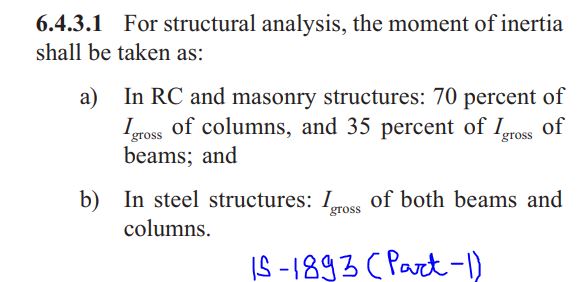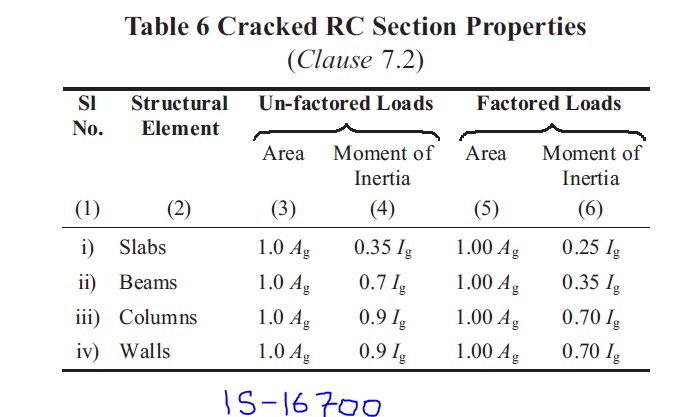Concrete structures under high seismic loads experience significant stresses and structural members yield & start to have cracks within them.
[1] This causes formation of cracks in the structural members & reduces their stiffness.
Which makes the structural members more flexible, and they start to experience more deformation.
[2] To factor in the cracked section in the analysis, stiffness modifiers are used in analytical models.
I net = stiffness modifier * I gross
[3] Different structural codes recommended different values of stiffness modifiers based on the nature of force member experience.
[4] Indian codes introduced the concept of stiffness modifiers in 2016 by making additions in IS 1893 (Criteria for earthquake resistant design).
[5] The stiffness modifiers should be used only for structural analysis and to check deflections & drift caused cracked section.
For designing the structural members full section should be used without any reductions.

[6] The stiffness modifiers as per clause 6.4.3.1 of IS 1893 should be as given below.
For RC columns: 0.7
For RC beam: 0.35
The reduction for beams is more as it a flexure element & has more possibility of crack formation.
[7] Further Table 6 of IS 16700 (Criteria for structural safety of tall concrete buildings) also states the stiffness modifiers for cracked analysis, which also gives given information for walls & slabs.

This is a post on stiffness modifiers, any comments or suggestions are welcomed.
Comments are closed